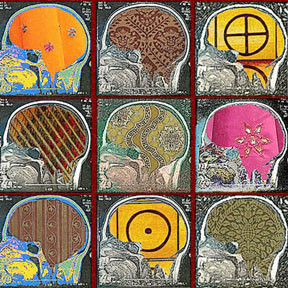The Arts and Education: Why Cuts in Art Programs for Children Hurt Your Kids
What Students are Really Missing when Tight Budgets Cut the Arts
It’s no secret that arts programs for children are the go first when budget cuts take place in our school systems. Schools must achieve Adequate Yearly Progress (AYP) required by the federal No Child Left Behind Act – and the arts are not a priority, or even included in the assessment standards of most states. But we must pose the question, what are students REALLY missing when we drop the arts from our curriculums?
Developmental Psychologist Jerome Kagan, Ph.D., reveals “Six Good Reasons for Advocating the Importance of Arts in School” :
1. A Necessary Confidence Booster. The dropout rate among high-school students hovers around 25%. Too many of these students quit because they decide (usually in about the fourth grade) that their performance in math and reading is not up to par with the rest of the students, concluding that school is not for them. These children need opportunities to be successful at some other classroom task, such as art.
2. A Sense of Agency. Kagan argues that children today have very little “sense of agency,” or the sense that they can take on activities that have an impact on the world, however small. Due to today’s overprotective middle-class parent, children are left with few activities that are of their own design. Instead with free time, children typically watch television or roam the internet, activities that are frequently passive and which encourage conformity. The arts offer that sense of creation.
3. Exercising the ‘Whole’ Mind. The brain uses three tools to acquire and store knowledge: motor skills, perceptual representations, and language (which domaintes modern society and schools). Kagan says that the heavy reliance on language is unfortunate. All three tools use a different component of the brain, and “contribute to its healthy development.” A structured art program requires all three knowledge tools “and, therefore, amplify a child’s understanding of self and the world.”
4. Doing Something for the Sake of Others. Participation in the arts gives a child the opportunity to create or achieve for the sake and joy of others versus achieving for personal gain. The arts create beauty, which can be shared with others versus high grades only being enjoyed by the student.
5. A Chance to Achieve as a Group. The arts offer an opportunity for children to work together. Kagan notes that too many of children’s activities are solitary. Due to the “individualistic” nature of today’s culture, children have few opportunities to develop morality and concern for others. The arts provide an opportunity to achieve success as a team, and have shared outcomes.
6. A Healthy Way to Express Feelings. The arts provide a chance for children to express feelings they may be unable to express in words; this ability to express emotion is an important component to the healthy emotional development of children.
 |
Bette FetterFounder and CEO of Young Rembrandts and Author of Being Visual |











